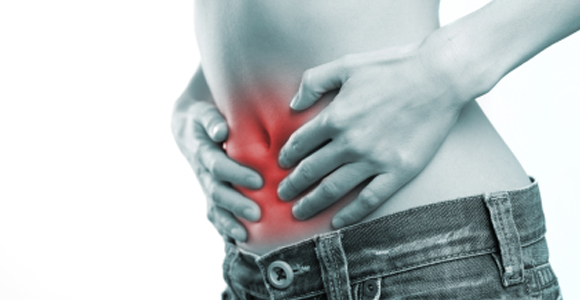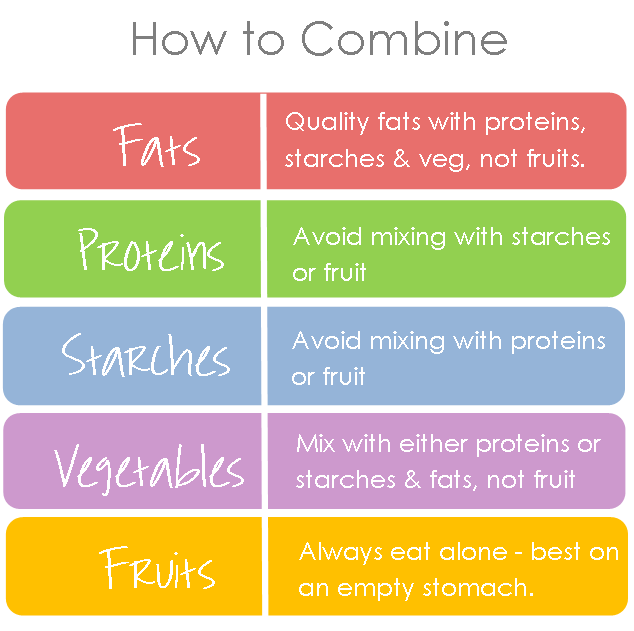
Trophology – The Science of Food Combining
It is an established scientific fact in Western medicine that in order to initiate efficient digestion of any concentrated animal protein, the stomach must secrete pepsin. But it is also a well-known fact that pepsin can function only in a highly acidic medium, which must be maintained for several hours for complete digestion of proteins.
It is an equally well established fact of science that when we chew a piece of bread or potato or any other carbohydrate/starch, ptyalin and other alkaline juices are immediately secreted into the food by the saliva in the mouth. When swallowed, the alkalized starches require an alkaline medium in the stomach in order to complete digestion.
Anyone should be able to figure out what therefore happens when you ingest protein and starch together. Acid and alkaline juices are secreted simultaneously in response to the incoming protein and starch, promptly neutralizing one another and leaving a weak, watery solution in the stomach that digests neither protein or starch properly. Instead proteins putrefy and tracheas ferment owing to the constant presence of bacteria in the digestive tract.
This putrefaction and fermentation are the primary cause of all sorts of digestive stress, including gas, heartburn, cramps, bloating, constipation, foul stools, bleeding piles, colitis, and so forth.
Many so called ‘allergies’ are also the direct result of improper food combinations; the bloodstream picks up toxins from the putrefied, fermented mess as it passes slowly through the intestines, and these toxins in turn cause rashes, hives, headaches, nausea, and other symptoms commonly branded as allergies. The same foods that cause allergic reactions when improperly combined often have no ill side-effects whatsoever when consumed according to the rules of trophology. The final fact of the matter is this: when you immobilize your stomach and impair digestive functions by consuming foods in indiscriminate combination, the bacteria in your alimentary canal (digestive system) have a field day. They get all the nutrients and thrive, while you get all the wastes and suffer.
According to a recent survey in America, the average American male today carries about 5 pounds of undigested, putrefied red meat in his gut. Leave 5 pounds of meat in a dark, warm, moist place for a few days and see for yourself the results of putrefaction. The severely septic condition of the human intestinal tract is unique in nature, yet Western physicians take it for granted and even insist that it is harmless to the rest of the system.
In fact, in order to protect itself from the chronic toxic irritation of improperly combined meals, the colon secretes large quantities of mucus to entrap toxic particles before they damage the colon’s sensitive lining. When this occurs at every meal, every day, every week, throughout the year – as is quite typical in modern Western diets – the colon ends up secreting a constant stream of mucus, which accumulates and gets impacted in the folds of the colon. This results in a narrowing of the passage through the colon and a constant seeping of toxins into the bloodstream by osmosis. When the impacting of toxic mucus in the colon reaches critical pressure, it cause a pocket to balloon outward through the colon lining, causing a condition called diverticulosis. Colitis, IBS, and colon cancer are the next stages of colon deterioration caused by these conditions.
“This is the worst possible combination of foods to mix together at a single meal, and yet it is the mainstay of modern Western diets: meat and potatoes, hamburgers and fries, eggs and toast, etc.”
When one consumes protein and starch together, the alkaline enzyme ptyalin pour into the food as it’s chewed in the mouth.
When the masticated food reaches the stomach, digestion of starch by alkaline enzymes continues unabated, thereby preventing the digestion of protein by pepsin and other acid secretions.
The ever-present bacteria in the stomach are thus permitted to attach the protein and putrefaction commences, rendering nutrients in the protein food largely useless to you and producing toxic wastes and foul gases, including such poisons as indol, skatol, phenol, hydrogen sulphide, phenylpropionic acid, and others.
If that is the case, you may well wonder, then why does the stomach have no trouble handling foods that naturally contain both protein and starch, such as whole grains?
As Dr. Shelton points out, “There is a great difference between the digestion of a food, however complex its composition, and the digestion of a mixture of different foods.”
To a single article of food that is a starch-protein combination, the body can easily adjust its juices, both as to strength and timing, to the digestive requirements of the food. But when two foods are eaten with different, even opposite, digestive needs, this presence adjustment of juices to requirements becomes impossible.
Correctly combining foods makes all the difference in the world to proper digestion and metabolism.

